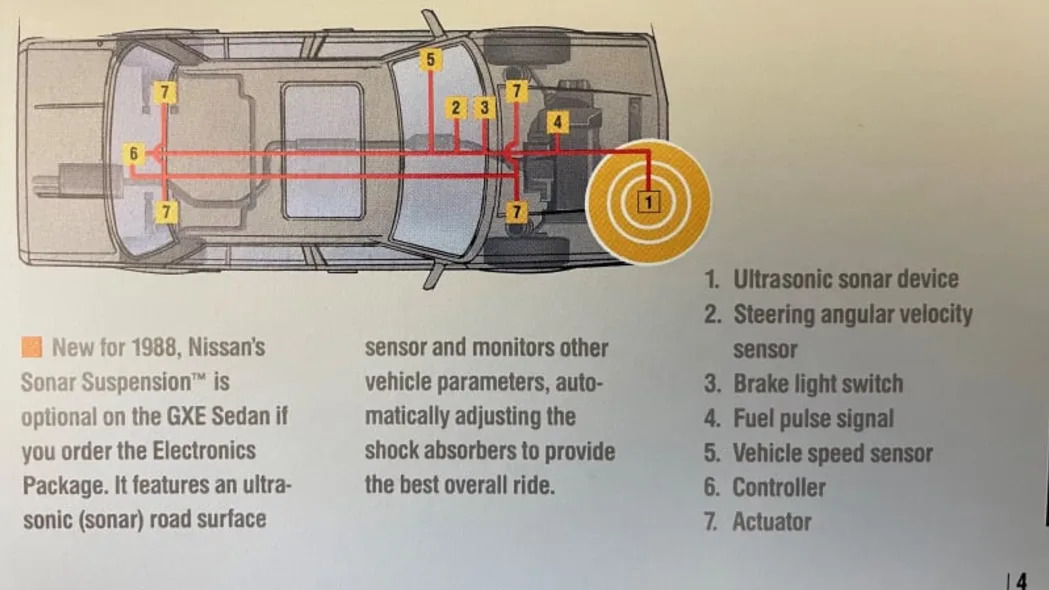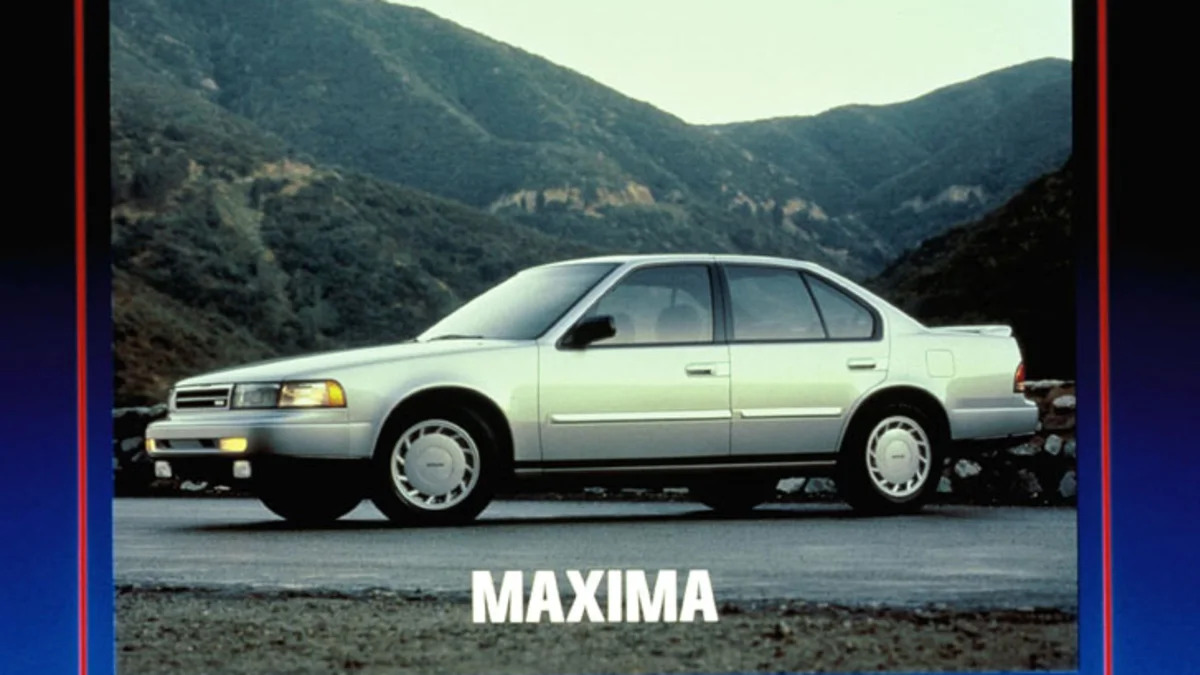We just drove the 2021 Nissan Maxima 40th Anniversary Edition car that celebrates 40 years of Maxima for Nissan (and technically Datsun). That put us in the mood for some history, and ultimately led to stumbling upon a seriously whiz-bang piece of ahead-of-its-time tech offered by the Maxima in the late 1980s and early 1990s.
Officially named the Nissan Sonar Suspension, this exotic optional system was designed such that the car could observe the road directly ahead of it, then automatically adjust the dampers in preparation for bumps, undulations or smooth pavement to provide the smoothest possible ride. Sounds a whole lot like what you'd find in the most advanced, high-tech and high-priced suspension systems of today, right? Except in a 1988 Nissan.
Here’s how it worked.
An ultrasonic road surface scanner is mounted under the front bumper of cars equipped with the Sonar Suspension (it required checking the “Electronics Package” box). This sensor then transmits the information — potholes, bumps, etc. — back to a controller. The controller is also constantly taking into account and reading information from the steering, brakes, throttle, and vehicle speed sensor. It then combines all of this knowledge into action, telling actuators at each damper to adjust the damping of the suspension for the road ahead.

Photo from 1988 Nissan Maxima brochure
The dampers also had three selectable preset modes: soft, normal or firm. Each kept the dampers in a range of firmness to suit whatever kind of driving you’re about to tackle. These three modes are the same ones that the car can automatically toggle back and forth between as it’s reading the road. It’s obviously not as advanced as today’s continuously adaptive dampers, but three different settings is enough to soften blows on bad roads and tighten things up on smooth, winding ones.
This sonar suspension option was first offered on the second-generation Maxima for 1988 and made the leap to the all-new, third-generation car the following year. It ceased being an option for 1995 with the fourth-gen car. We’ll note that this system is different than the adaptive suspension pioneered by the Infiniti Q45. That system was arguably more advanced than the Sonar Suspension, as it actively quelled body movements in all directions. Sensors could detect any body level changes (like body roll in corners), and the hydraulically actuated dampers would compensate and keep the car level. Its purpose was more directed at enthusiastic driving than the Maxima’s comfort-oriented approach, but there were still benefits to comfort, as your typical nosedive under braking and squat under acceleration were mitigated.
Adaptive or active dampers are commonplace in cars these days, and there are a small number of luxury cars (usually the most expensive ones) with road scanners that aim to accomplish a similar goal as Nissan was aiming for more than three decades ago. The new Maxima features no such technology, instead opting to use fixed ZF Sachs dampers. There are no modes to select let alone sonar scanning of the road ahead. The 2021 Maxima’s ride and handling balance is nevertheless to our liking, but we also can't help but feel that the Maxima has lost some of its innovative spirit over the years.
For the full Maxima review, check out our Road Test here.





















Sign in to post
Please sign in to leave a comment.
Continue